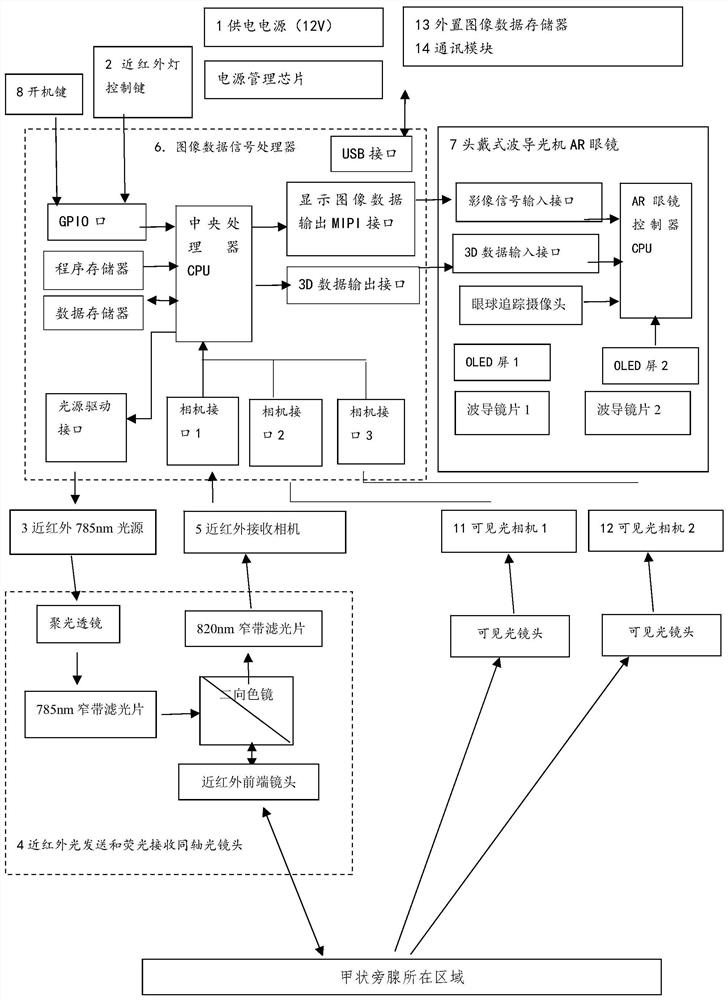Near-infrared fluorescent parathyroid gland recognition enhancement method based on AR technology
A parathyroid, AR technology, applied in the field of near-infrared fluorescent parathyroid identification enhancement
- Summary
- Abstract
- Description
- Claims
- Application Information
AI Technical Summary
Problems solved by technology
Method used
Image
Examples
Embodiment 1
[0091] Embodiment 1 A method for identifying and enhancing near-infrared fluorescent parathyroid glands based on AR technology described in the present invention includes the following steps:
[0092] 1) Emit 785nm near-infrared light to the area where the thyroid gland and parathyroid glands are located. The thyroid gland and parathyroid glands produce 820nm autofluorescence under the irradiation of near-infrared light of this wavelength, receive the generated autofluorescence and simultaneously acquire the thyroid gland and parathyroid glands Then determine the position of the thyroid gland and parathyroid gland in the near-infrared autofluorescence image, and output the image coordinate information of the position of the parathyroid gland in the image;
[0093] 2) Synchronously collect the left and right sets of image data obtained by the left and right cameras of the visible light RGB binocular camera, and store the two sets of image data in the memory, and record them as t...
Embodiment 2
[0101] Embodiment 2 A position enhancement instrument constructed according to the identification enhancement method of the present invention, comprising:
[0102] The power supply 1 is used to supply power to the near-infrared autofluorescence excitation device and the data signal processing component, and its power supply port is electrically connected to the near-infrared autofluorescence excitation device and the data signal processing component respectively. A first switch 2 is connected, which is used to control the start and stop of the near-infrared autofluorescence excitation device; a second switch 8 is connected between the data signal processing component and the power supply, and is used to control the start and stop of the data signal processing component;
[0103] The near-infrared autofluorescence excitation device 3, its signal input end is connected to the signal of the data signal processing component, the power supply end is electrically connected to the pow...
PUM
| Property | Measurement | Unit |
|---|---|---|
| Thickness | aaaaa | aaaaa |
Abstract
Description
Claims
Application Information
 Login to View More
Login to View More - Generate Ideas
- Intellectual Property
- Life Sciences
- Materials
- Tech Scout
- Unparalleled Data Quality
- Higher Quality Content
- 60% Fewer Hallucinations
Browse by: Latest US Patents, China's latest patents, Technical Efficacy Thesaurus, Application Domain, Technology Topic, Popular Technical Reports.
© 2025 PatSnap. All rights reserved.Legal|Privacy policy|Modern Slavery Act Transparency Statement|Sitemap|About US| Contact US: help@patsnap.com



